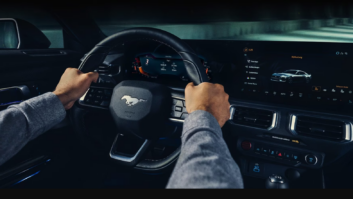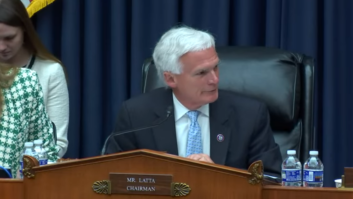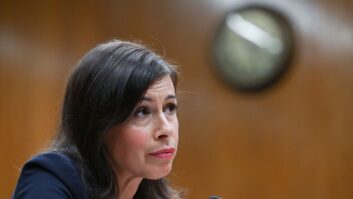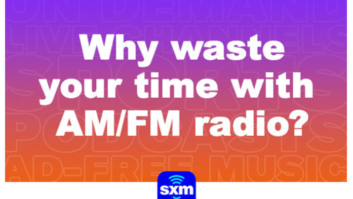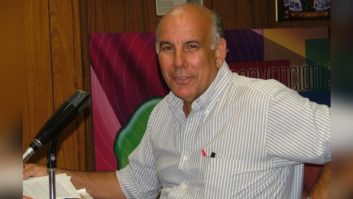For Many, the Medium Was the Only Contact With the World After Katrina
NEW ORLEANS Hurricane Katrina blew down buildings and homes and flooded an American urban icon, with fatal results. It also demonstrated the importance of terrestrial and amateur radio, the only means of communication for many people in the days following the disaster.
So significant was radio’s contribution that the executive director of one state broadcast association is calling on the federal government to guarantee diesel fuel deliveries to transmitters sites to allow stations to remain on the air in such situations in the future.
(click thumbnail)Radio news organizations rushed to cover the Katrina story. ABC News Radio engineer Kevin Rider works on location.
As Gulf Coast stations worked to resume normal operations, emergency management officials say radio was a key source of information because of other communications networks failed. Communication casualties included cell phone towers, landline phone systems and two-way radio. The losses severely hampered emergency communications, according to experts.
“The best communication we have is this radio station,” said Phil Capitan, mayor of Kenner, La., during an interview on WWL(AM) in New Orleans.
Nearly 40 radio stations remained off the air in the affected region as of mid-September, while 90 were back on the air, although many at reduced power, according to Ken Moran, director of the FCC’s Office of Homeland Security.
“One of the major themes was the failure of communications between different agencies. In many communities along the Alabama coastline, our radio stations were it as far as communicating with evacuees,” said Sharon Tinsley, executive director of the Alabama Broadcasters Association.
“Local agencies, in some cases, had no other means of communicating. Radio was a lifesaving service in some cases.”
Diesel fuel delivery
Tinsley hopes the Federal Emergency Management Agency will recall the value of radio during future natural disasters.
“Some of our stations had tremendous difficulties getting diesel fuel deliveries through to transmitter sites to remain on the air. Given that we were the most successful means of communication with the population, maybe FEMA or state governments will work to make sure the fuel deliveries get through more easily to keep operations running.
“The fuel situation for emergency generators was a very desperate situation – so much so that broadcasters had to run on low power to conserve fuel,” Tinsley said.
Jackie Lett, president of the Mississippi Broadcasters Association, said broadcasters in that state will approach the state legislature when it returns to session this fall to discuss “first responder” status for broadcasters.
“In this state we are not considered a first responder. That status would give us access to fuel and other commodities during state of emergencies,” Lett said.
The term “first responder” typically is used by the Federal Emergency Management Agency to describe public safety and emergency services departments. According to several sources familiar with emergency management in this country, no state has given broadcasters that designation.
FEMA Public Information Officer Michael Rieger said the emergency information that broadcasters delivered was important.
“They helped fill in the communications gap and were an asset to each community. Specifically, the radio stations in New Orleans made a huge difference of informing people and helping to keep up morale. It’s extremely difficult when you can’t pick up a phone and make a call,” Rieger said.
The Clear Channel Radio and Entercom project in New Orleans was a good example of radio’s efforts, Rieger said.
Entercom and Clear Channel joined efforts to form the United Radio Broadcasters of New Orleans, simulcasting programming generated by Entercom’s WWL(AM) on a local network of radio stations across the city, which at one time included as many as 15 stations.
WWL originated programming from the basement of the Jefferson Parish Emergency Operations center and the studios of Clear Channel’s WJBO(AM) in Baton Rouge, La., using an ad hoc air chain of ISDN, satellite and microwave to deliver programming to the individual stations.
Lifeline
The impact of the loss of two-way and cellular communications in the area was lessened with help from ham radio operators.
Ham radio operators across the country were a gold mine for emergency communication and played a crucial role after Katrina, said Harold Kramer, chief operating officer for the National Association for Amateur Radio.
“We helped in a lot of rescues. We organized a structured communications network very quickly. We helped to relay messages from residents to volunteers and emergency personnel. Shelters for evacuees used ham radios to communicate with other shelters to help families find missing relatives,” Kramer said.
The National Association for Amateur Radio, formerly ARRL, which has nearly 150,000 members, includes many local sections or communication networks that mobilize in times of emergency, Kramer said.
The Gulf Coast shortwave radio network was mobilized quickly at the behest of the American Red Cross and Salvation Army, Kramer added.
“This is something ham operators practice almost every week. But we have never had anything of this magnitude. Once our people were activated we aided in emergency communications between shelters, hospitals, local emergency agencies and even public safety departments,” Kramer said.
Ham radio emergency responders carry “jump kits” with portable radio, transceivers and portable antennas, Kramer said, enabling them to establish communications with other ham operators on a specific communication network quickly.







